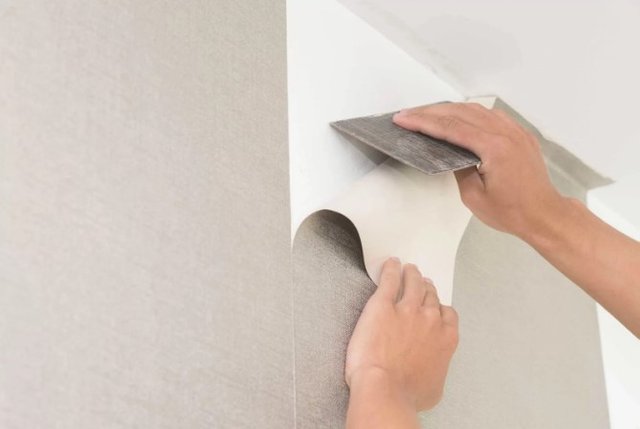The Art of Deconstruction: What You Should Know About Wall Removal
In the realm of architecture and interior design, the act of removing walls is akin to sculpting space. It’s a transformative process that can breathe new life into a room, opening up possibilities for enhanced functionality and aesthetics. The decision to remove a wall should be taken after considering factors like structural integrity and safety.
This article highlights the art of deconstruction, focusing on wall removal and shedding light on essential considerations and the intricate process involved, with a spotlight on wall removal in Sydney.

Understanding the Importance of Load-Bearing Walls
Before wall removal, grasp the concept of load-bearing walls. These walls, like the roof, ceiling, or upper floors, support structural weight. Removing a load-bearing wall without proper reinforcement can compromise the structural integrity of a building, leading to potential safety hazards and costly repairs. Identifying load-bearing walls is the first step in any wall removal project.
Wall Removal in Sydney
With its architectural landscape and evolving urban spaces, Sydney sees a demand for wall removal services. Whether it’s in residential homes, commercial properties, or heritage buildings, the need to adapt spaces to changing needs and design trends is prevalent. Due to the stringent building regulations and seismic considerations in Sydney, wall removal projects require planning and execution.
The Process of Wall Removal
Structural Assessment: A professional structural engineer conducts a thorough assessment to determine if the wall is load-bearing or non-load-bearing. This involves examining blueprints, inspecting the wall's construction, and considering the building's overall structural design.
Reinforcement Planning: In the case of load-bearing wall removal, reinforcement measures must be implemented to redistribute the weight and ensure structural stability. This may involve installing support beams, columns, or alternative load-bearing structures to bear the weight carried by the removed wall.
Permit Acquisition: Obtaining the necessary permits from local authorities is imperative before commencing any wall removal project. In Sydney, adherence to building codes and regulations is strictly enforced to maintain safety standards and prevent structural failures.
Deconstruction Process: With careful planning and safety precautions in place, the deconstruction of the wall begins. This involves dismantling the wall layer by layer, ensuring minimal disruption to surrounding structures and finishes.
Structural Integration: Once the wall is removed, the newly created space may require integration with the existing structure. This could involve extending floor joists, modifying ceiling supports, or reinforcing adjacent walls to maintain structural integrity.
Finishing Touches: With the structural work complete, the focus shifts to finishing touches like plastering, painting, and flooring installation. These details add the final polish to the renovated space, blending the old with the new.
Challenges and Considerations
Budget: Wall removal projects can vary significantly in cost depending on factors like the wall's size, structural complexity, and material requirements. It's essential to establish a realistic budget and contingency plan to accommodate unforeseen challenges.
Timeline: Timely completion of wall removal projects is crucial to minimise disruption to occupants and ensure operation continuity in commercial settings. Delays due to permit approvals, inclement weather, or unforeseen structural issues can impact project timelines.
Safety Measures: Safety should always remain a top priority during wall removal projects. Proper safety protocols, including using protective gear, scaffolding, and fall prevention measures, are essential to prevent accidents and injuries on-site.
Heritage Considerations: In Sydney, where heritage buildings are prevalent, wall removal projects may encounter challenges due to preservation regulations. Any alterations to heritage-listed structures must be carefully planned and executed to maintain their historical integrity.
Importance of Learning About Wall Removal
Wall removal in Sydney is vital due to the city's unique architectural landscape and stringent building regulations. Sydney's diverse mix of historic buildings, modern structures, and seismic considerations necessitates a nuanced approach to wall removal projects. Learning about wall removal in Sydney ensures compliance with local building codes and regulations, minimising the risk of structural failures and safety hazards.
With the city's growing population and evolving urban spaces, there is an increasing demand for renovations and space optimisation, making knowledge of wall removal techniques invaluable for architects, engineers, and designers. Whether it's renovating heritage-listed buildings, repurposing commercial spaces, or creating modern residential interiors, navigating the complexities of wall removal in Sydney enables professionals to execute projects with precision and confidence, contributing to the city's architectural innovation and urban development.
Conclusion
Wall removal is an art and a science, requiring a delicate balance of creativity, technical expertise, and adherence to safety standards. The demand for services of wall removal in Sydney underscores the importance of skilled professionals who can navigate the complexities of structural engineering and design. Whether it's creating open-plan living spaces in residential homes or revitalising commercial interiors, the art of deconstruction holds the key to unlocking new possibilities in architectural innovation and spatial design.